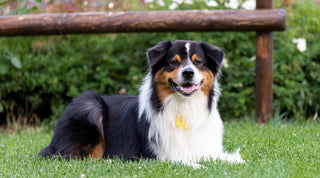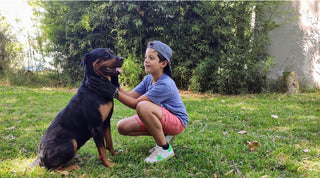Understanding the Importance of Joint Care in Bulldogs
Bulldogs, with their distinctive, muscular build and endearing facial wrinkles, are a breed that captures hearts easily. However, their unique physique also predisposes them to certain joint issues, such as hip dysplasia and arthritis. As responsible bulldog owners, it's crucial to understand the essentials of joint care to ensure these beloved dogs lead a comfortable and active life.
Common Joint Problems in Bulldogs
Due to their genetics, weight distribution, and growth patterns, bulldogs are prone to several joint problems. Conditions such as hip dysplasia, where the hip joint does not fit snugly into the hip socket, can cause pain and mobility issues. Elbow dysplasia and arthritis are also not uncommon in bulldogs, potentially leading to stiffness, discomfort, and reduced range of motion.
Proper Nutrition for Joint Health
A cornerstone of joint care for bulldogs is proper nutrition. Obesity can place considerable strain on a bulldog’s joints, exacerbating existing conditions or hastening the onset of joint deterioration. To maintain optimal weight, feed your bulldog a high-quality diet that is appropriate for their age, size, and activity level. Supplements containing glucosamine and chondroitin can support joint health, but always consult with a veterinarian before adding any supplements to your dog's diet.
An easy way to ensure your Bulldog gets these nutrients is by adding a scoop of Neo Bites Health Aid Meal Topper over your pup's existing meals. It's made from wholesome superfoods like kale, oats, turmeric, kelp and insect protein, and carefully formulated by a veterinarian—so you can rest assured they'll be getting the right amount of what they need.
Regular, Low-Impact Exercise
Regular, low-impact exercise helps keep a bulldog's joints mobile and muscles strong, which can alleviate pressure on the joints. Swimming is an excellent form of low-impact exercise that can benefit bulldogs. Short, frequent walks can also keep them active without overexerting their joints. Always monitor your bulldog during exercise, especially in hot weather, as they can quickly overheat due to their brachycephalic (short-nosed) nature.
Comfortable Living Spaces
The living environment plays a significant role in caring for a bulldog’s joints. Hardwood and tile floors can be slippery and tough on your bulldog’s joints, making carpets or rugs better options to provide traction and cushioning. Orthopedic dog beds can offer additional support for their joints, especially beneficial for older bulldogs or those already suffering from joint conditions.
Regular Veterinary Check-ups
Early detection and treatment are key in managing joint problems effectively. Regular check-ups with a veterinarian can help identify the onset of joint issues before they become more challenging to treat. Your vet may recommend X-rays or other diagnostic tests to evaluate the condition of your bulldog's joints. Should a problem be identified, they might suggest a range of treatments from medications and physical therapy to more advanced options such as surgery.
Physical Therapy and Pain Management
In some cases, physical therapy can greatly benefit bulldogs with joint pain by improving flexibility, strength, and overall mobility. Techniques such as massage, hydrotherapy, or specific exercises can be part of a physical therapy regimen designed by a professional. Additionally, pain management under the guidance of a veterinarian may include anti-inflammatory medications or joint injections to provide relief.
Being Mindful of Physical Limitations
As bulldog owners, it's essential to recognize and be mindful of their physical limitations. Avoid encouraging your bulldog to engage in high-impact activities such as jumping from heights or racing up and down the stairs. Instead, promote activities that are within their capabilities and do not put undue strain on their joints.
In conclusion, bulldog joint care is a multifaceted approach that includes nutrition, exercise, environmental modifications, regular veterinary care, and, when necessary, therapy and pain management. By staying vigilant and proactive, bulldog owners can help ensure these charming canines enjoy a life full of comfort and joy, despite their predisposition to joint issues.






